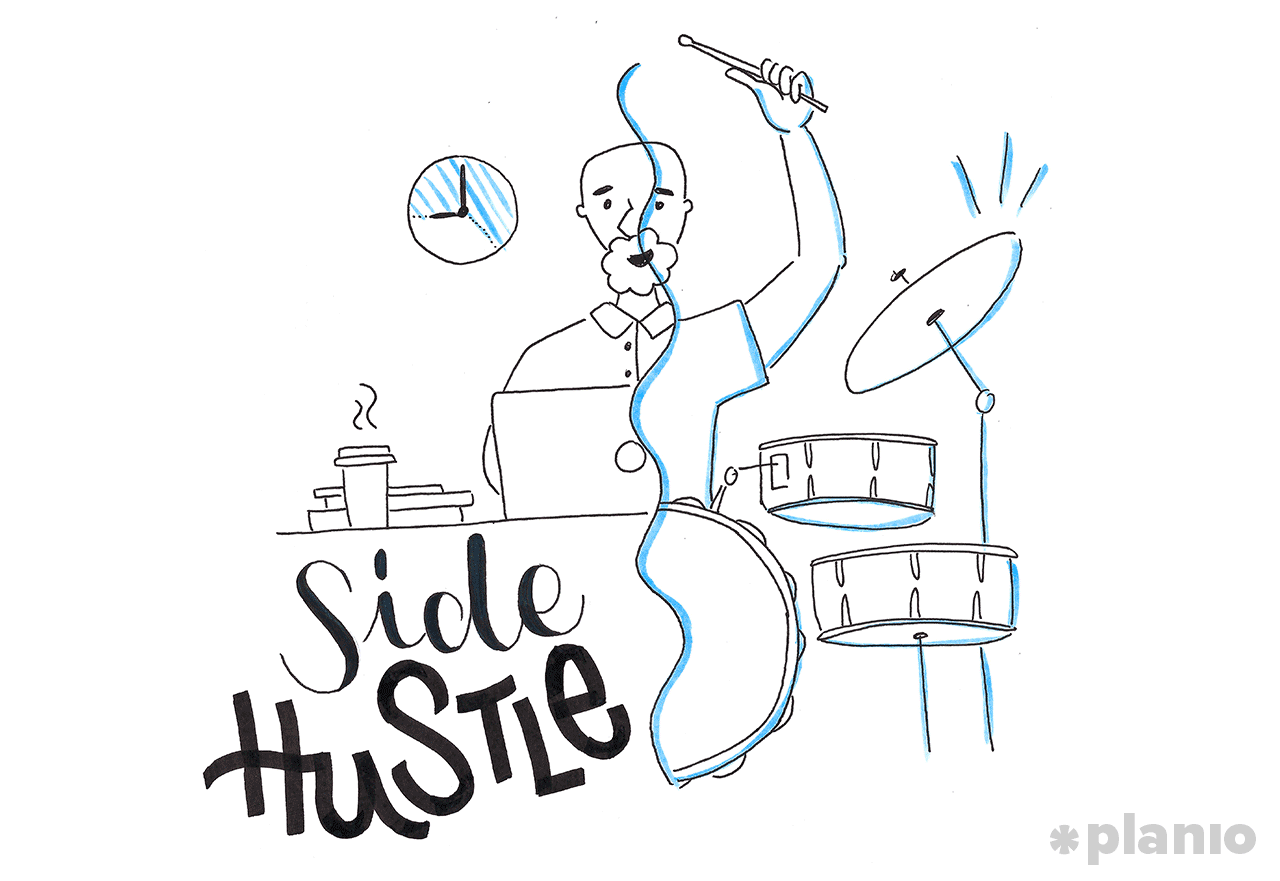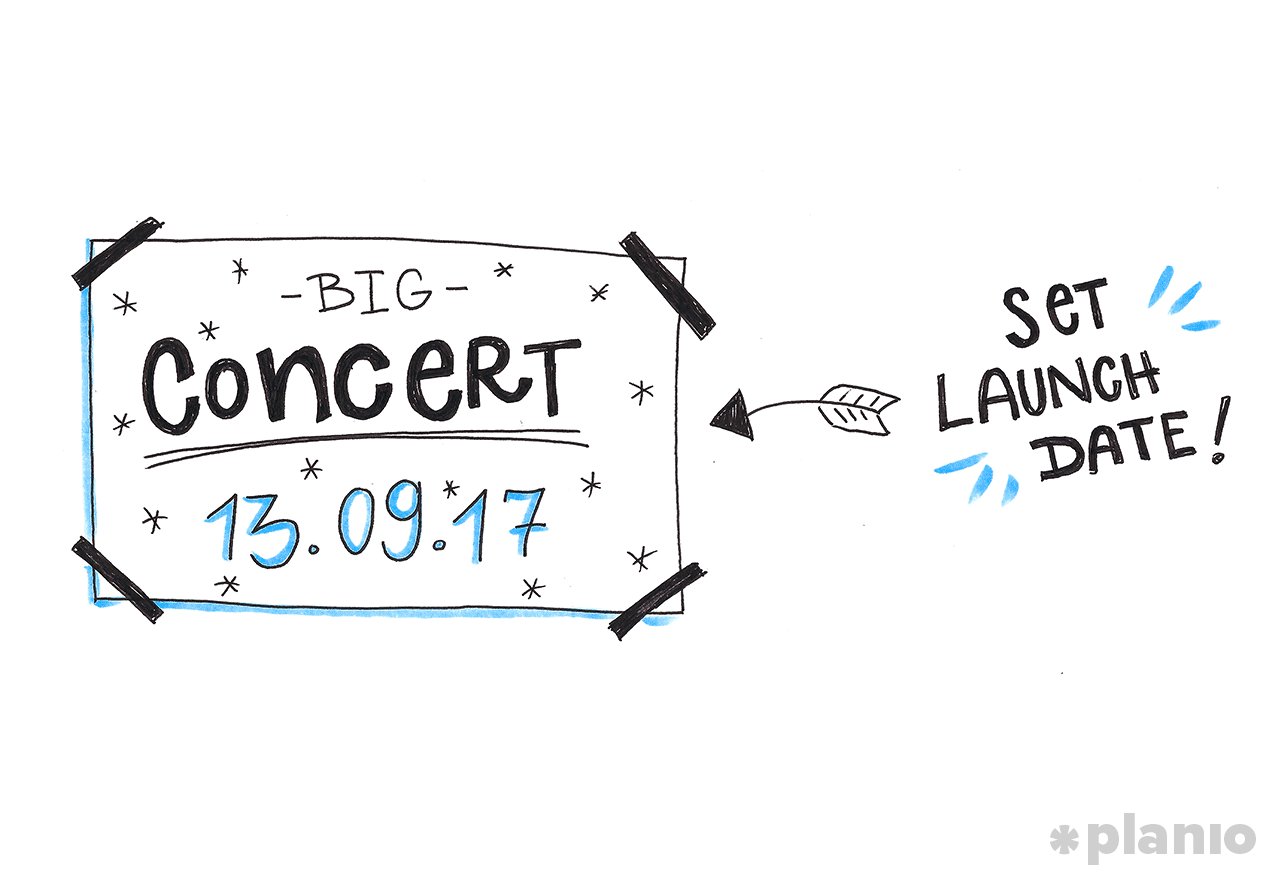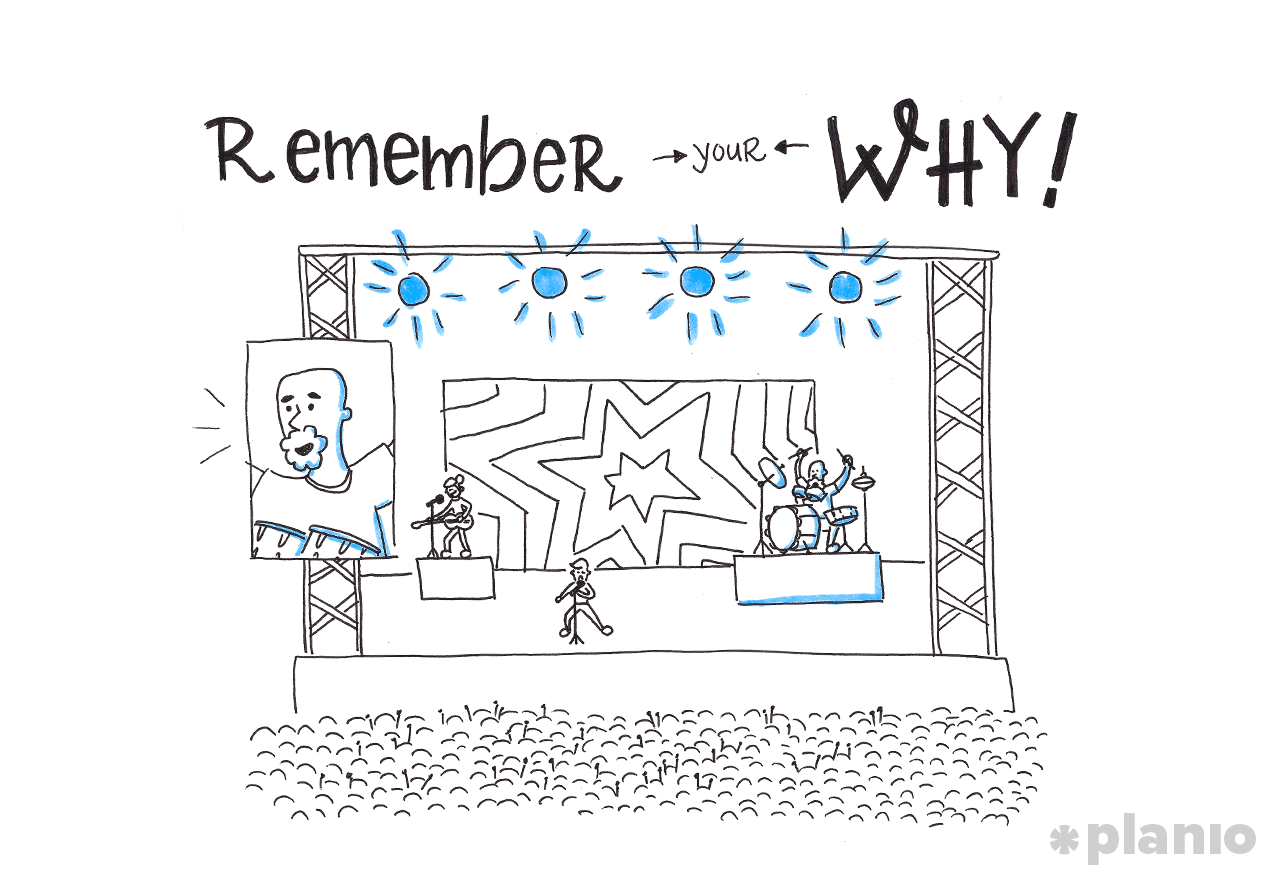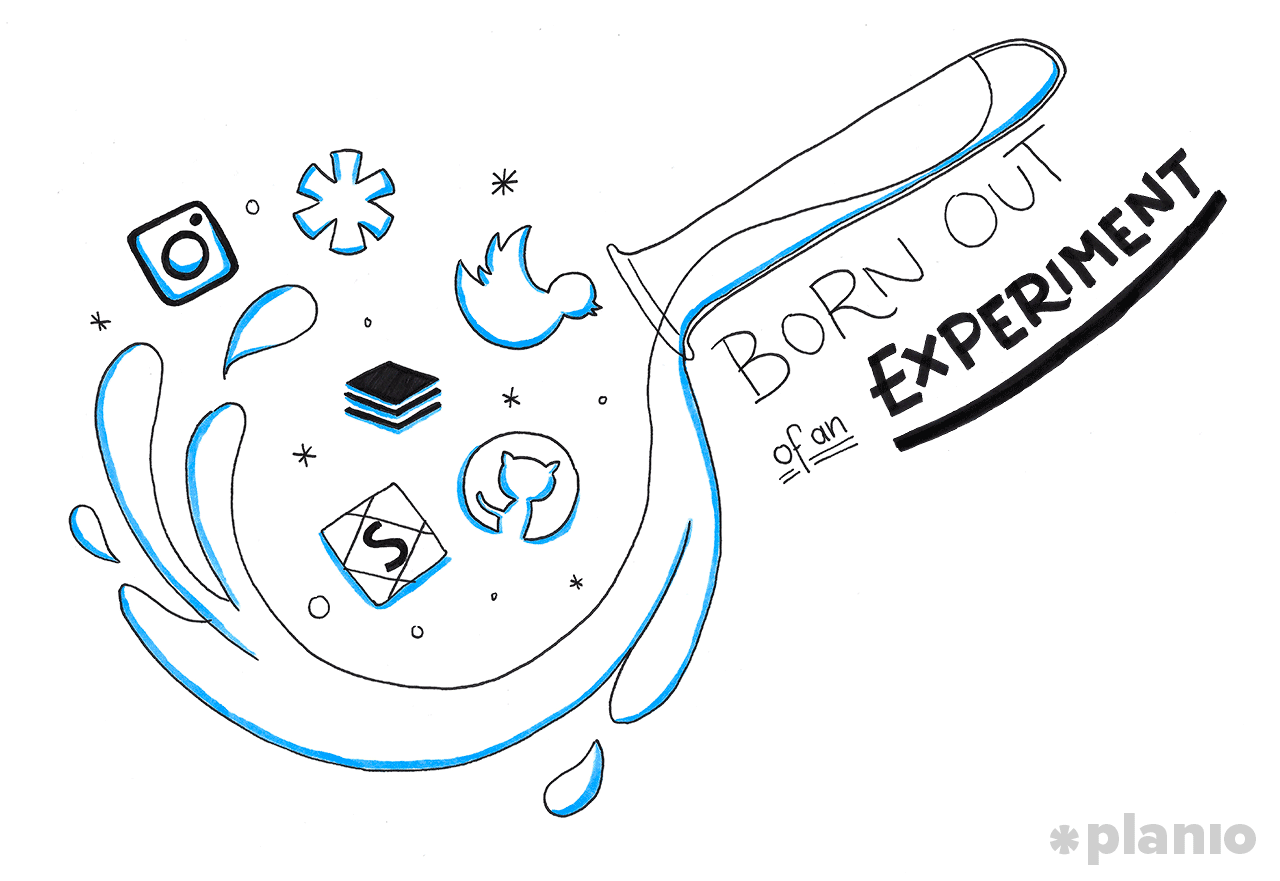Making Money on the Side of a Full Time Job: The Side Hustle

According to a study by Bentley University, 66% of people aged 18-34 want to start their own businesses, but as of 2013, only 3.6% of businesses in the US are owned by people under age 30. This is partly because of fear (20% of new businesses fail after their first year), partly because of a perceived lack of resources, and partially because people just don’t know how to do it.
Putting aside these issues that hold people back, it truly has never been easier for a person to start their own business. Even if you wouldn’t describe yourself as an entrepreneur, many companies have made it possible for gig workers to take on side projects to fit a flexible schedule. Whether you’re trying to build something up to become your full-time job, or just want to supplement what you’re doing with extra income, there are a number of different opportunities you can pursue as a side hustle.
What is a Side Hustle?
You might have heard the term, but to provide a quick recap, a side hustle is something you do in addition to your full-time job that serves as a way to make some extra cash. Sometimes it’s purely for the purpose of making extra money, sometimes it’s a passion project that you’re growing to eventually make your full-time gig.
Besides the opportunity to earn extra cash, a side hustle allows you to do what you love and can even create career-changing opportunities you otherwise wouldn't have at your normal day job. The more closely related your side hustle is to where you want to be, the better these opportunities.
According to a study by LinkedIn, there are 331,941 people freelancing on the side of full-time employment in the US. Having a side hustle while working your day job can be beneficial in many ways. Since you’re receiving a paycheck and benefits from your full-time job, there’s an element of safety and security while you’re experimenting with other things on a smaller scale. On that note, a side hustle can serve as a stepping stone to full-time entrepreneurship if you decide that you really enjoy what you’re doing with your side hustle, and are earning more from it.
Up until now, the discussion revolving around starting a side hustle has been mostly positive. But it’s important to understand that starting a side hustle while keeping a day job can be quite nerve wracking. Adding work on top of 40(+?) hours per week will take strict discipline to prioritize and manage your time. You also must account for the mental shift that inevitably takes place, revolving around what’s most important in your life.
Knowing both sides of the story, here are some tips to starting your side hustle so that you won't make easily preventable and costly mistakes. Don’t talk yourself out of starting a side hustle until you’ve taken the time to fully understand how a side hustle could fit into your life!
Prepare Before Starting
Motivational speaker and author Tony Robbins has been quoted saying, “Business success is 80% psychology and 20% mechanics.” His philosophy is a version of the Pareto principle (also known as the 80/20 rule), which oftentimes helps people understand where their efforts are best spent, and what isn’t worth worrying about.
Business success is 80% psychology and 20% mechanics.
What Robbins is trying to say is that it’s important to mentally prepare and accept that a new business venture, even on a smaller scale, will be difficult at first. Acknowledge that you will have to make some sacrifices and be pushed out of your comfort zone. The question is: can you truly sustain this state of being?
Don't start a side hustle with the hope of striking it rich immediately; it takes some hard work to build it up to that kind of level. Prepare yourself mentally that your side hustle may start with money trickling in, before it builds to a steady stream of income. Understand that a side hustle with a company like Uber or Postmates will result in immediate payout, but building a freelance business on the side can take much longer to become profitable. Because of this, deciding on what type of side hustle to start will also come back to your level of risk tolerance.
The final step in mental preparation? Deciding if this is something that can make you happy over the long term. By failing to prepare, you are preparing to fail.
Should you start a side hustle? Only if it makes you happy!
Inventory Your Strengths and Interests
Ok so at this point, you’re probably strongly considering the possibility of a side hustle. But the question remains—what will yours be?
In order to figure this out, create two lists: one of your potential side hustle ideas and the skills they might require, and another list of the skills you have and can honestly say that you’re good at.
Next, find some commonalities between the two lists. Billionaire Mark Cuban says that your business will succeed if it’s “Something you love to do and something you’re good at”. Mark Zuckerberg agrees, saying that it’s better to “follow your happiness”. He adds that if don't succeed, you’ll still be doing what you love. In a world that’s suffers from a regular level of discontent, being happy is considered as success.
Your business will succeed if it’s something you love to do and something you’re good at.
If your list points you to a side hustle possibility that is not your top choice, decide whether you’d rather learn the skills you need, or if you’ll need to consider outsourcing what you don’t know.
Validate your Business Idea With One Paying Customer
In order to determine whether or not your side hustle can actually make you money, you’ll need to get honest feedback from paying customers. No, your mom or friends don’t count, because they will most likely support you whether or not they actually like what you’re selling. While this is a beautiful thing, it’s not helpful for your business in the long run.
The idea behind validating your side hustle early on is so that you don’t waste effort and other resources on a losing idea. In fact, the number 1 reason why most businesses fail is the lack of a market for a proposed product or service. Just because you think it’s a good idea doesn’t mean that anyone else does.
Says Basecamp founder Jason Fried, “The only answers that matter are dollars spent. People answer when they pay for something.”
Determine What Sets Your Side Hustle Apart From Competitors
If you’re not working with a business (like Uber) to send you opportunities, you’ll have to figure out how to set yourself apart from the existing competition in your space.
Create your unique value proposition by answering these questions:
- What do you do? How is it different than what’s already out there?
- Who do you serve? How do you serve them differently than businesses already on the market?
If you’re stuck, ConversionXL provides a more in-depth guide for creating a bulletproof value proposition.
In order to be successful, a side hustle does not only have to fill a need, but also set itself apart from other businesses.
Set Clear Goals for Your Side Hustle
Having the strong desire to execute a side hustle is good, but to succeed, you have to set benchmarks for success. The best way to do that is through goal setting.
A good formula for formulating goals is the SMART Goals criteria. Once you have your goals in place, make an actionable to do list. Break it down by goals and tasks you want to cross off your list yearly, monthly, weekly, and daily. Review these goals often, and keep your list in a spot where it would be hard to ignore it.
Set a Side Hustle Launch Date

The most important thing when it comes to creating a side hustle is to just get started. Many people get bogged down by feelings of fear and want to plan as much as they can for their launch. While planning is a necessary step, planning for too long and aiming for perfection will result in your plan never becoming a reality. In order to force yourself to carry out the plan you’ve created for your side hustle, set a launch date and tell people about it. Letting other people in on your side hustle will introduce a level of accountability that will be hard for you to ignore.
So make an action plan for the launch date. Determine some milestones that need to be realized before you launch. A tool like Planio can help you to coordinate goals with real life due dates. It can also help you to maintain organization for side hustle clients and projects.
Leading up to the launch, you may need help to meet your deadline on time, or to fill in any of the knowledge blanks you may be missing. Outsource and delegate tasks that you aren't good at so that you can focus on what you do best. It may mean spending money, but it’s for the purpose of earning money. Remember - expenses to build your business are tax deductions!
Don’t Get Fired From Your Day Job
A successful side hustle is an exciting thing. So exciting that you may be tempted to prioritize it over you full-time job. But don’t let excitement cause you to slip up. At this point in time, your full-time job is likely still your main source of income, since your side hustle is just getting started.
Maintain your professionalism. Though tempting and likely possible to get away with, don’t work on your side hustle while you’re on the clock at work. Make sure to honor your contract, because not doing so will likely lead to legal action and strained relationships with your employer. It’s bad business to burn bridges, especially with contacts you maybe be able to use when you go out on your own.
Don't Quit Your Job… Yet
Truly, there’s no real security in any job, but freelancing/solopreneurship can be especially tumultuous. Some months, everything is going your way. Other times, clients quit on you without explanation, or delay payments well past their due date.
Even if your side hustle is going exceptionally well, don’t get too overconfident. Instead, take the time to build a sustainable list of clients. The magic number to know your side hustle can overtake your full-time work is when it’s capable of generating a consistent 75%+ of your monthly full-time salary. As a best practice, save up 6 months of living expenses to live on, just in case your gamble doesn’t pay off.
Remember Your Why When Things Get Tough

A side hustle usually starts out as wanting to earn extra money, or exploring a hobby. Eventually, you may find a higher purpose in what you’re doing that goes beyond extra income. Running a side business means you own your time: not your employer. Maybe you’re doing what you’re doing because you genuinely want to help people.
Whatever moves you with regards to your side hustle, when it gets tough, stick to your “why” to help you power through.
Starting a Side Hustle While Employed Full-Time
With the right intentions, planning, and validation, a side hustle can be a great way to realize a creative passion, or make a little extra money. Where will yours lead you? If you need help fleshing out a side hustle idea, tweet at @Planio. We’ll share your thoughts with our audience and ask them to provide some input!


